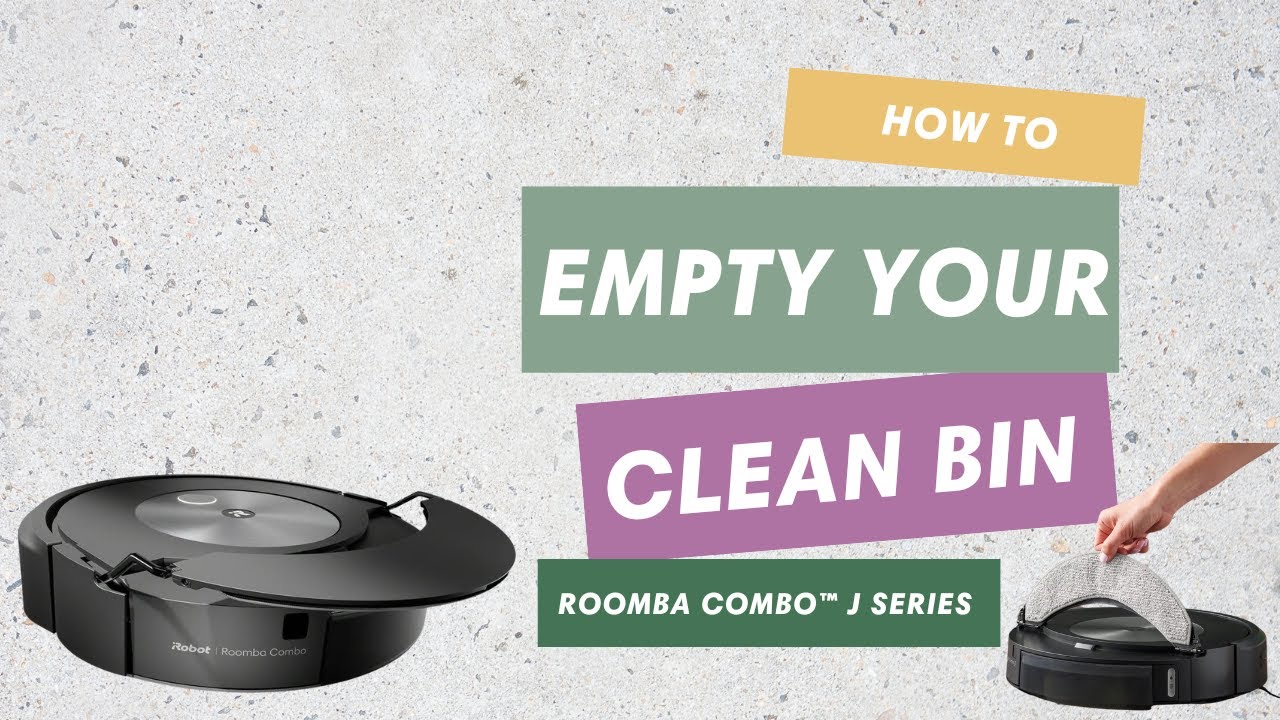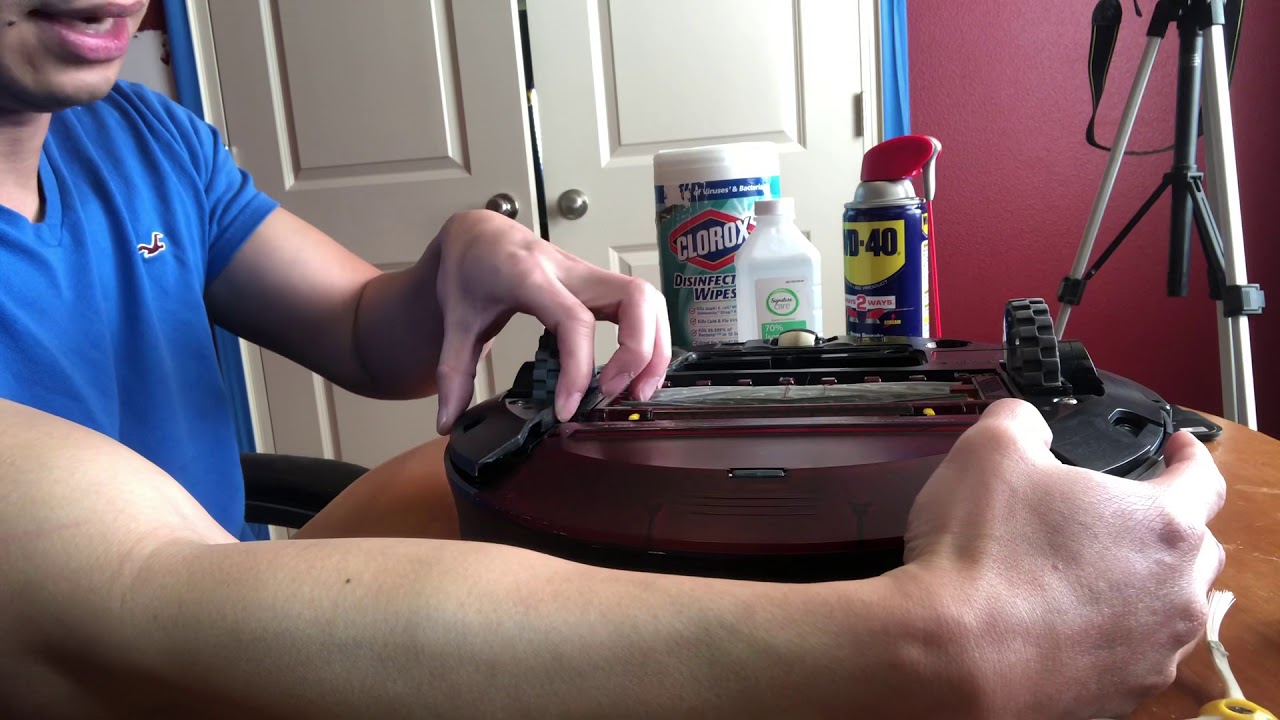You can deal with a Roomba that won’t stop squeaking by:
- (Optional) Try to isolate the type of noise with your particular problem.
- Ensure that your Roomba isn’t dragging anything by the brush.
- Empty your Roomba’s dustbin after every cleaning session.
- Fix any wheel misalignments as soon as they’re spotted.
- Avoid using your Roomba in uneven terrain.
- Get it checked out in a trustworthy service center.
It’s more than a simple annoyance if you notice your Roomba won’t stop squeaking – it’s often indicative of a serious problem impairing its functionality. Troubleshooting it early on is key to keep things from getting out of hand, and we’re glad to help you along the process!
Getting Your Roomba to Stop Squeaking
Try To Figure Out What's Causing the Noise You’re Hearing
While this might seem silly, the type of noises it makes could cue you in on why your Roomba won’t stop squeaking.
For instance, shrill squeaks could indicate soft components are being impacted – your Roomba’s rubber treads might be choked by debris or warped by heat. Loud, rattling vibrations may be a sign of hard metals or plastics colliding with each other. Bristling, scratchy sounds would warn you to watch for a clogged or bent brush.
While we’ve provided a ton of solutions to get your Roomba to stop squeaking, going through all of them in depth can eat up a ton of time. Being able to pinpoint the problem you’re dealing with could spare you the hassle and get your Roomba back to working order ASAP.
Check Your Roomba’s Brush for Dragging Objects/Debris
One of the most common causes for your Roomba’s incessant squeaking are things dragging along your brushes. These can rub against the floor or the bottom of your Roomba, making irritating noises all the while.
Thankfully, this isn’t too hard to notice – snagged items will be easy to spot, and they’ll likely be making those sounds at consistent intervals.
Dragged objects can also confuse your Roomba’s sensors, forcing it to work around an imaginary obstacle and cause it to behave erratically. This effort strains its motor – doubly so for old or worn-down units – and might be another reason why your Roomba won’t stop squeaking.
Turn off your Roomba (very important!), remove the brush part (follow the manual for your model), and parse through clogged debris with tweezers or a can of compressed air. Do not try to brute force any snags off, as you could bend a bristle or deform your brush.
Empty the Roomba’s Dustbin
A full dustbin shouldn’t directly cause your Roomba to constantly squeak, but it can cut off your unit’s airflow. This causes blockages that could force components in your Roomba to grind against each other, leading to these squeaking noises.
Here’s how you can quickly empty your Roomba’s dustbin:
Full dustbins cause other headaches like reduced cleaning efficiency and greater motor strain, so it’s better to be proactive with this. Make it a point to empty your Roomba’s dustbin after every cleaning session – don’t wait for the warning prompt to pop up.
Sort out Potential Wheel Misalignments
Wheel misalignments are notorious for causing Roombas to squeak, but are quite unlikely to develop out of the blue – it’s usually caused by acute damage (i.e. high falls, user accidents).
Misaligned wheels increase friction, causing them to skip or churn rather than roll on the ground while cleaning. Particularly awful misalignments can even gouge lines into your house's flooring!
These also induce vibrations inside your device, which then reverberate inside your Roomba’s chassis and incite all of those annoying noises. This places further strain on your Roomba’s components, shortening its expected service life.
Some Roombas can warn you of wheel jams – and can even indicate which wheel is affected – but the troubleshooting process should remain universal across models.
If you need further assistance in unjamming your Roomba’s wheels, follow the video below:
Note that wheel misalignments are very different from clogged wheels. Clogged wheels should be able to move – albeit with a heavily restricted range of motion – while misaligned wheels are often jammed into their current position.
Be Careful About Uneven Floors
Uneven floors can be a surprising contributor to your Roomba making squeaking sounds. Uneven terrain means your Roomba needs to compensate for the difference, and the increased friction while moving on the floor can be the reason why your Roomba won’t stop squeaking.
Even just a simple carpet in your room could make it more difficult for your Roomba to operate. Be especially mindful of tassels and fringes on your carpet, as it’s common for them to get caught up in the wheels and get dragged along.
While using Roombas in rooms with uneven flooring is doable, we don’t find it to be worth the hassle or the risk. If you can get by cleaning those spots manually, we’d recommend doing so.
Send It To A Service Center for Appraisal
If your Roomba still won’t stop squeaking despite all your efforts, it might be time to lean on official channels for professional support – here’s iRobot’s support landing page.
iRobot warranties are good to redeem within a year of their initial purchase date, but they won’t take responsibility for everything that could go wrong (i.e. negligence). You’ll find the specific breakdown here – make sure that your specific issue falls under what their warranty offers.



